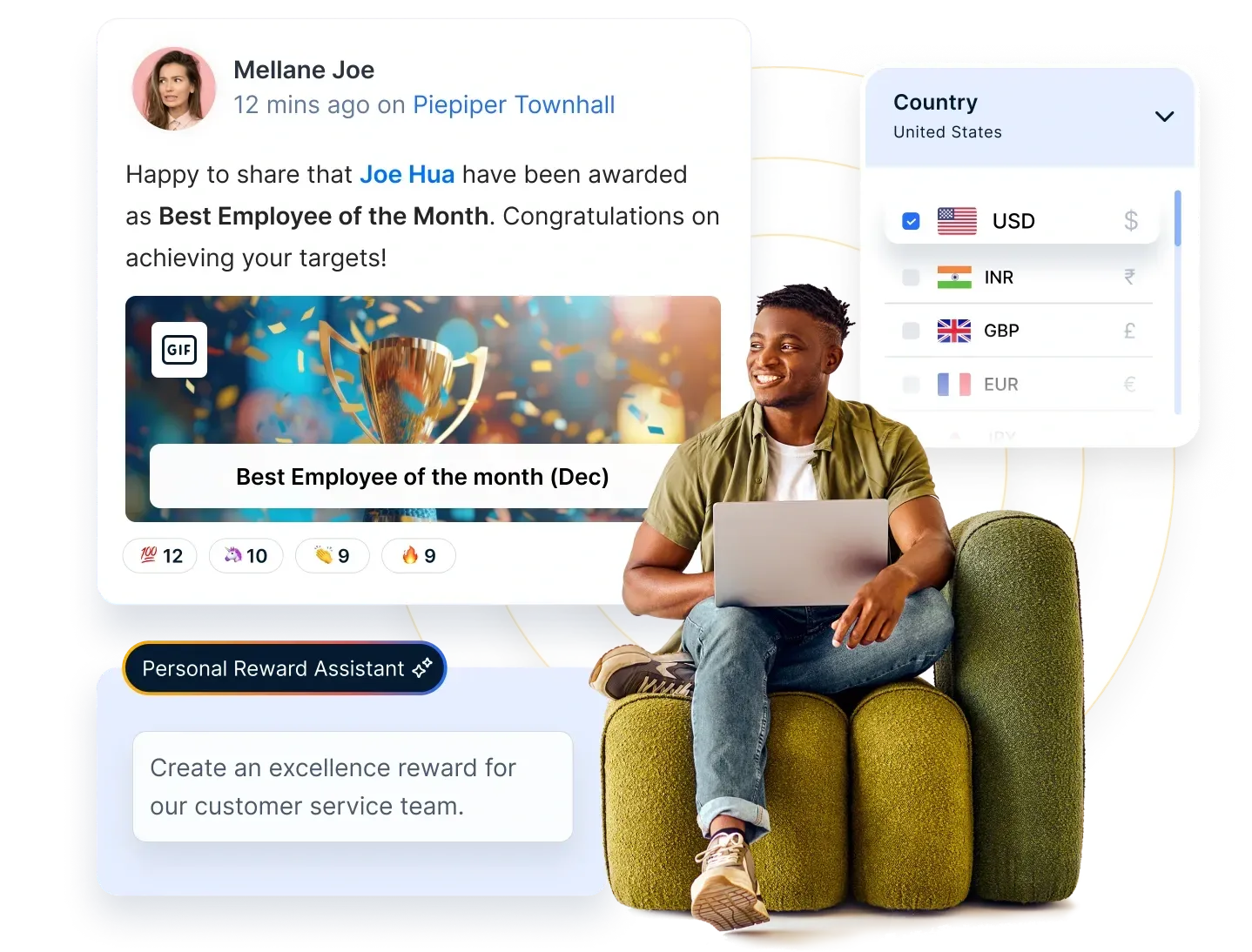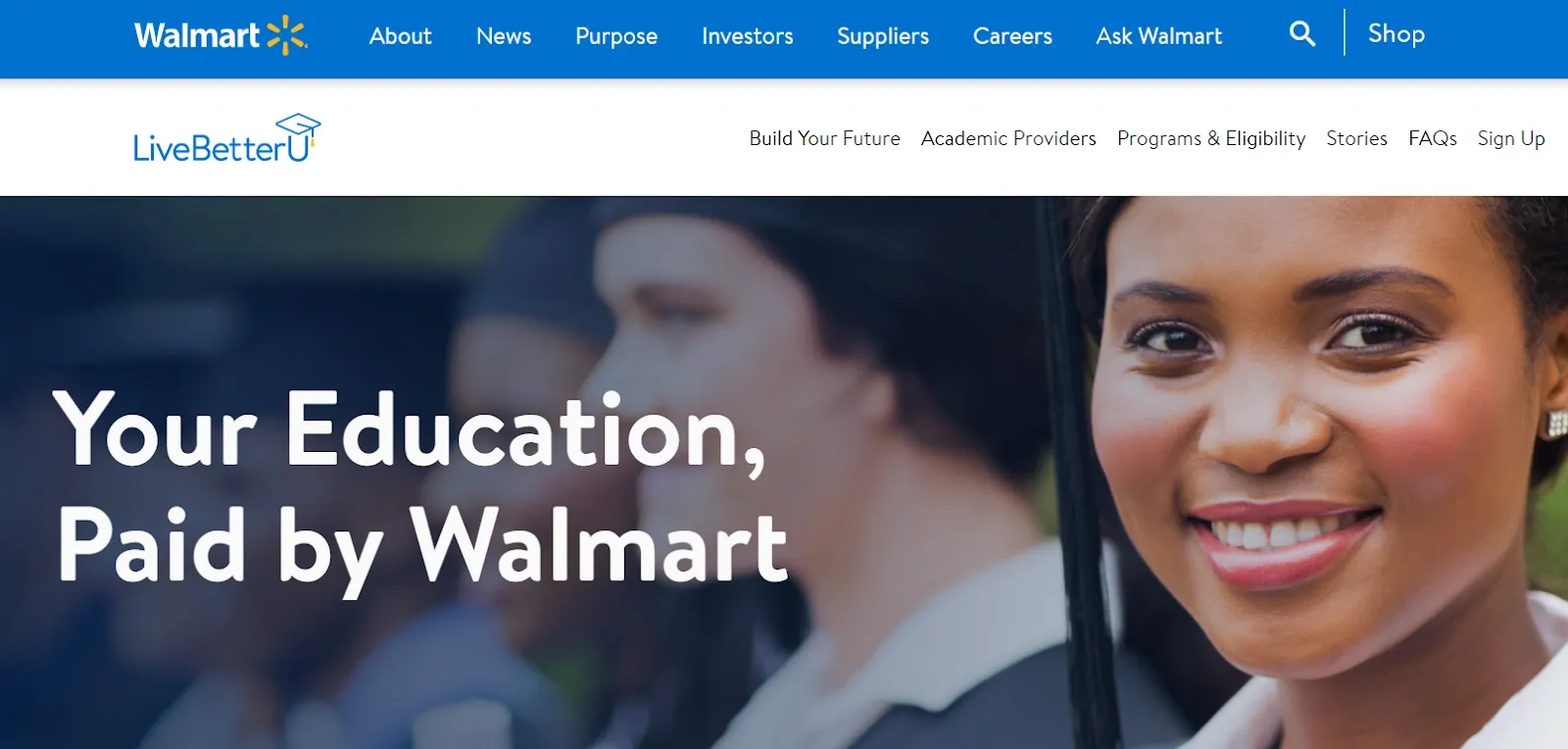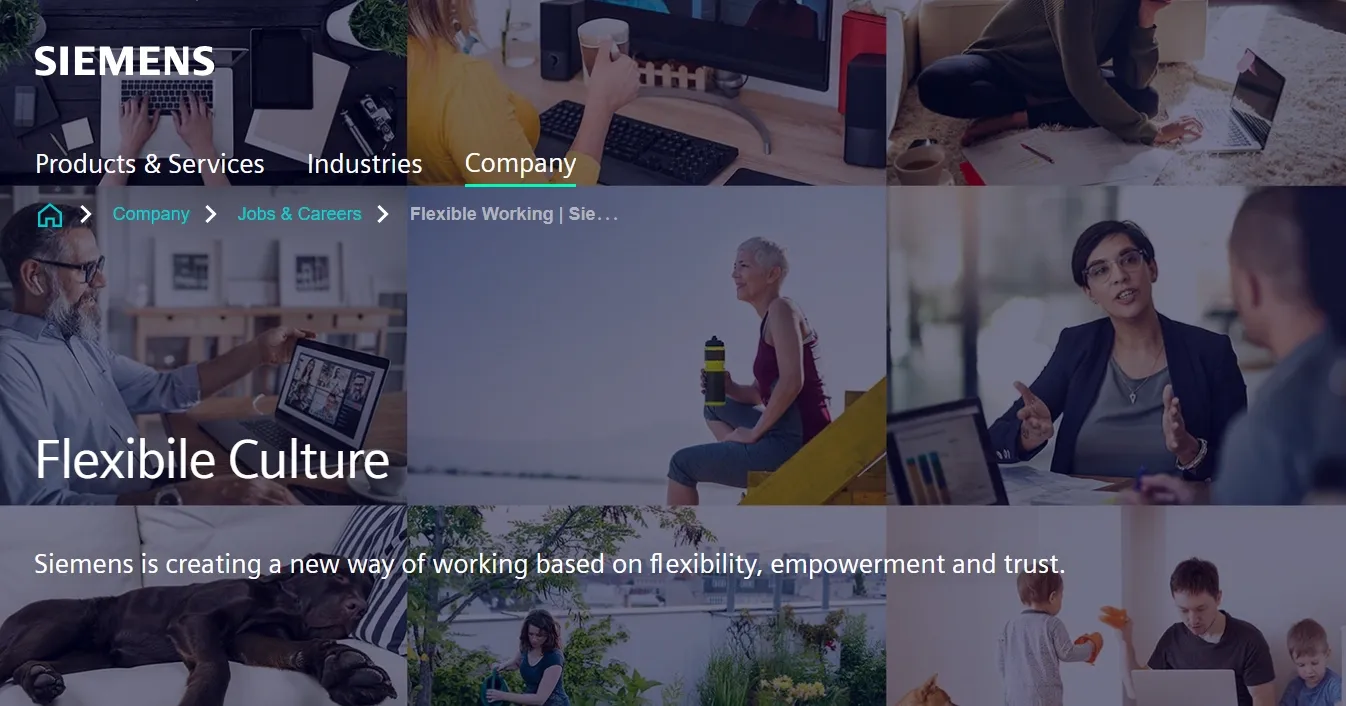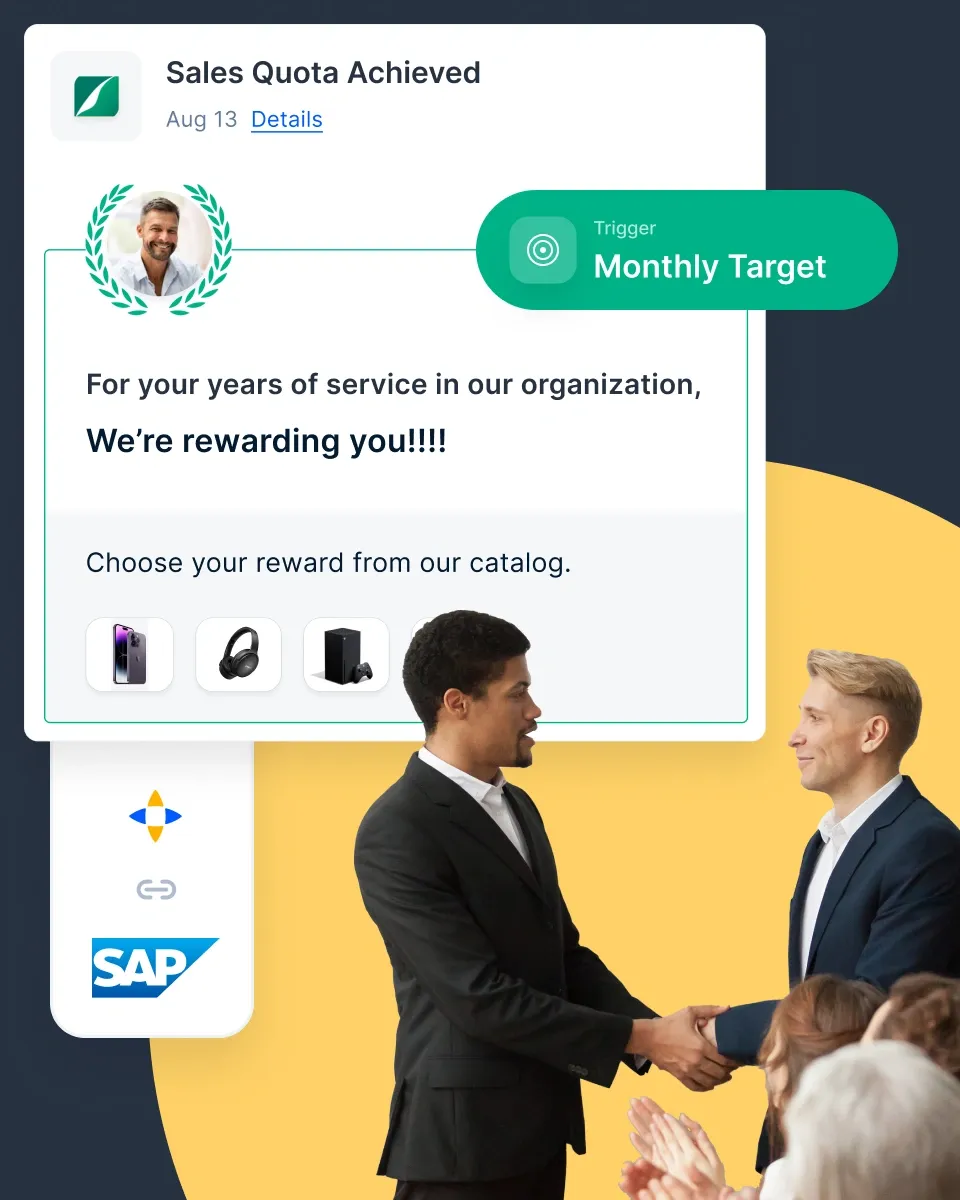Employee Retention Program & Incentive Ideas to Keep Your Best People
Explore powerful incentives for an employee retention program that improve engagement, boost morale, and keep your best employees committed for the long term.
On this page
Attracting top talent is only half the battle—keeping them engaged and committed is the real challenge. With competition for skilled employees increasing, businesses must invest in employee retention programs that foster loyalty and job satisfaction.
A well-structured retention strategy goes beyond salary—it involves creating a work environment where employees feel valued, supported, and motivated to grow. Employee retention incentives, such as performance bonuses, wellness perks, and career development opportunities, play a crucial role in reducing turnover and strengthening workforce stability.
But what are the most effective retention incentives for employees? From recognition programs to flexible work arrangements, this article explores proven strategies that help organizations retain their best talent and build a thriving workplace.
Let’s dive in.
What is an employee retention program?
An employee retention program is a structured strategy designed to keep employees engaged, satisfied, and committed to an organization long-term. These programs focus on reducing turnover by improving workplace culture, providing growth opportunities, and ensuring employees feel valued and supported.
Key elements of an effective employee retention program:
- Recognition & rewards: Acknowledging employee contributions through incentives, bonuses, and platforms like Empuls enhances motivation and job satisfaction.
- Competitive compensation & benefits: Offering fair salaries, health benefits, and tax-free fringe benefits makes employees less likely to seek opportunities elsewhere.
- Career growth & development: Providing training, mentorship, and clear career paths helps employees see a future within the organization.
- Work-life balance initiatives: Flexible work arrangements, remote work options, and wellness programs reduce burnout and improve overall retention.
- Strong company culture & communication: Encouraging transparency, collaboration, and employee feedback fosters a sense of belonging and engagement.
A well-executed employee retention program not only reduces turnover but also improves productivity, morale, and overall business performance. Organizations that invest in retention strategies create a workplace where employees want to stay and grow.
The role of incentives in employee retention programs
Keeping employees engaged and motivated is a constant challenge for businesses. While company culture and career growth opportunities matter, incentives play a crucial role in ensuring employees stay committed for the long haul.
Whether it's monetary bonuses, recognition programs, or career development perks, well-designed incentives create a workplace where employees feel valued and motivated.
Employee retention isn’t just about reducing turnover—it’s about building loyalty and fostering a positive work environment. Incentives help in:
- Boosting morale: Employees who feel appreciated are more likely to stay motivated and productive.
- Encouraging performance: Performance-based incentives drive employees to meet and exceed their targets.
- Enhancing job satisfaction: Perks like wellness programs or extra paid time off contribute to a better work-life balance.
- Fostering loyalty: A strong incentive structure makes employees feel valued, reducing the likelihood of them seeking opportunities elsewhere.
- Strengthening company culture: When employees are rewarded for their contributions, they’re more likely to engage with the company’s vision and values.

Build a Workplace Employees Don’t Want to Leave
Keeping top talent isn’t just about pay—it’s about creating a workplace they love. Empuls helps you foster engagement, reward contributions, and strengthen team connections.
15 Incentive ideas for running effective employee retention programs
Naturally, you sometimes have to make an active effort to retain employees. Implementing incentives for an employee retention program can be an effective approach, so here are 15 ideas you should consider.
1. Internal promotions
Your employees need to know that, when the time comes, you won’t bring in someone else to place in a managerial spot. They want it to be someone from the ranks. Even if it’s not them, by promoting one of their colleagues, you’re also giving them hope that this might happen for them at one point.
2. Performance bonuses
This point is pretty simple and doesn’t require much explanation – if your employees do a great job, you want to reward them financially. The difference between a performance bonus and pay is that they expect and feel like they deserve the latter, so they don’t feel gratitude for it. Bonuses are seen differently.
3. Employee discount
You can offer your employees a special employee discount if your employees are also your customers. This could also earn social credit because they can order an item for their friend or family member using their discount.
4. Extra vacation days
Like with bonuses, they are already entitled to their vacation days, but what about giving them a few extra days to reward them for their exemplary behavior and admirable performance? It’s small for you but could make a difference for them.
5. Work anniversaries
After a while, your employees may feel like you’re taking them for granted. Why not host a work anniversary party and even buy them a gift to show them this is not the case?
6. Profit sharing
Why would your staff care about the outcome of a project if they’re working on a salary? Regardless of if the project succeeds or fails, their income is not affected. Sure, company reputation and long-term health also affect them, but this is too abstract and too far in the future. Instead, start basing their bonuses on the profit percentage.
7. Giving them shares in your company
By rewarding your loyal employees with shares in your company, you’re giving them a reason to try harder. One of the most incentivizing ways to approach this is to give your employees a sense of ownership in the company. This way, it’s not just a sense; you’re giving them a share.
8. Career development programs
People often leave your employment because they don’t believe they have a future in your enterprise. However, if they had a roadmap for their career development, they wouldn’t be as eager to leave.
9. Company-sponsored social events
Teambuilding opportunities have a utility, but for most of your staff members, they’re just an excuse for a team to have fun. So, consider taking your team to paintball or an escape room for bonding.
10. Employee referral program
Whenever there’s a job opening, ask your employees to recommend someone. This will show them that you value their opinion and, like with the discount, this is a great chance for them to earn some social points.
11. Special projects
Some people abandon employers because they don’t feel challenged. So, whenever you feel like someone hasn’t been “challenged” for too long, switch them to a special project or assignment.
12. Flexible work arrangements
Now, this is different from giving everyone special work hours. Why would anyone feel special/grateful about it if it's your standard business model? Instead, you can grant flexible work arrangement “privileges” to individuals.
13. Employee wellness programs
Going above and beyond to offer special privileges to your employees is a great way to show them you care. A gym, yoga, or library membership is really not that expensive, but it has a significant psychological effect on your staff.
14. Health insurance enhancements
The quality of your health insurance program may show that you really care and that it’s worth it for one to stay in your employ. A standard policy is more than some workplaces provide but going above and beyond will always have a deeper impact.
15. Mentorship opportunities
People like working with experts, which is incredibly beneficial for their career plans. So, if you employ reputable people and industry experts, the rest of your staff might feel incentivized to stay around a while longer.
Companies with best employee retention programs
Top companies around the world prioritize keeping their employees happy and engaged. They've implemented specific strategies to improve retention, and here are five straightforward examples to inspire you:
1. Support continuing education, like Walmart

Employees might leave to further their education, which can be a loss for the company. By supporting their educational goals, you can keep them on board.
Walmart's approach: They partner with universities to offer discounted college courses. Upskilling is vital for Walmart's employee retention, with 70% of employees who underwent training staying longer than those who didn't.
Impact: The company saw a 30% reduction in turnover rates in areas with upskilling programs, highlighting the link between employee development and improved retention.
2. Use realistic job previews, like Hilton Hotels

When employees have unrealistic job expectations, they're likely to leave early. A realistic job preview (RJP) helps set accurate expectations from the start.
Hilton's approach: Hilton’s "Passport to Success" program improved employee retention, achieving a 96% retention rate and a 40% promotion rate among trained staff within six months.
Impact: The program’s success, which included training over 15,000 employees and doubling its reach with online modules, highlights how targeted skill-building enhances loyalty and career growth.
3. Foster a flexible work environment, like Siemens

A supportive work environment is crucial for retention. Employees have different needs, like new parents needing time off or someone wanting to work remotely.
Siemens' approach: They have an employee-led flexibility (ELF) policy, allowing for part-time work and remote options without a lengthy approval process. This helps employees balance work with their personal lives.
Impact: A FlexJobs survey found that 80% of employees would be more loyal to their employers if they had flexible work options.
4. Communicate during tough times, like Gucci
Economic downturns can cause employees to worry and leave. Clear communication and support can prevent this.
Gucci's approach: During a sales slowdown, the CEO reassured employees through a video message, encouraging them to stay positive and focused. This transparency helped maintain trust and morale.
Impact: Gucci CEO Marco Bizzarri's reassurance during a sales growth slowdown likely helped maintain morale and loyalty. Research shows that companies with engaged employees see a 21% increase in profitability and 59% lower turnover. Despite Gucci's growth slowing from 48.7% to 40.1%, Bizzarri's communication likely bolstered employee confidence and retention.
These simple strategies show that keeping employees happy and engaged goes beyond pay and benefits. By offering clear career paths, supporting education, setting realistic job expectations, providing flexible work options, and maintaining open communication, you can create a work environment where employees feel valued and motivated to stay.
Building a culture of retention with Empuls

Employee retention isn’t just about competitive pay or occasional perks—it’s about creating an environment where employees feel valued, motivated, and connected. A strong employee retention program ensures that engagement and recognition become part of everyday work culture.
This is where Empuls makes a difference. By integrating rewards, recognition, and real-time feedback into a single platform, it helps businesses build a workplace where employees feel appreciated and inspired to stay.
- Continuous recognition & rewards – Celebrate achievements, milestones, and everyday contributions with personalized incentives that truly matter.
- Real-time employee feedback – Understand engagement levels and gather insights with pulse surveys and sentiment analysis to address concerns before they escalate.
- Seamless peer-to-peer recognition – Encourage a culture of appreciation by enabling employees to recognize and reward each other effortlessly.
- Personalized incentives & benefits – Offer flexible rewards that align with employee preferences, ensuring every recognition moment is meaningful.
- Stronger workplace connections – Foster team bonding and collaboration through social engagement features, helping employees feel more connected to the organization.
Retention isn’t just about reducing turnover—it’s about keeping employees engaged, committed, and motivated to contribute their best. Empuls helps organizations create a culture where employees choose to stay, grow, and thrive.
Conclusion
Employee retention is critical for organizations seeking to maintain productivity, morale, and continuity. Effective retention programs reduce turnover costs and foster a loyal and motivated workforce.
Organizations can significantly enhance employee satisfaction and loyalty through comprehensive onboarding, continuous learning and development, recognition and rewards, flexible work arrangements, employee wellness programs, and strong company culture.
Examples from leading US-based companies such as Google, AT&T, Adobe, Microsoft, and Johnson & Johnson demonstrate the success of these strategies.
By investing in employees' professional growth and well-being, companies can create a supportive and engaging work environment, leading to higher retention rates and overall organizational success.
FAQs
1. How do continuous learning and development impact retention?
Providing continuous learning and development opportunities helps employees feel valued and invested in, which increases their likelihood of staying with the company. For example, AT&T’s Future Ready initiative offers extensive training, resulting in a more skilled and loyal workforce.
2. What role do recognition and rewards programs play in retention?
Recognition and rewards programs boost employee morale and loyalty. For instance, Adobe’s "Check-in" program, which replaces annual reviews with ongoing feedback, has led to a more engaged workforce and a 31% lower turnover rate.
3. How do flexible work arrangements influence employee retention?
Flexible work arrangements, such as remote work and flexible hours, significantly impact employee satisfaction and retention. Microsoft's extensive flexible working options have shown that 80% of employees would be more loyal if they had such options.
4. How does a strong company culture affect employee retention?
A strong company culture that aligns with employees' values fosters a sense of belonging and loyalty. Patagonia's emphasis on environmental sustainability and corporate responsibility has created a positive work environment, significantly enhancing retention.
5. What are some simpler ideas to boost employee retention?
Simple strategies include supporting continuing education (e.g., Walmart's partnership with universities), providing realistic job previews (e.g., Hilton’s "Passport to Success" program), fostering a flexible work environment (e.g., Siemens’ ELF policy), and communicating during tough times (e.g., Gucci CEO's reassurance during sales slowdown).


















